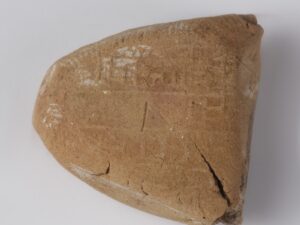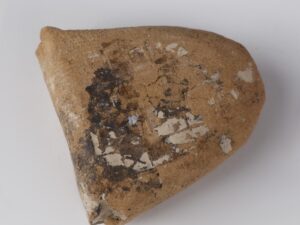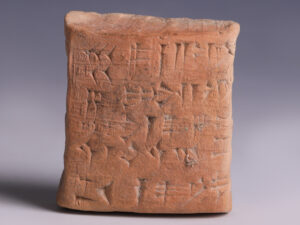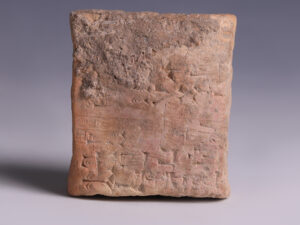With the development of complex social structures came the need to record, as we do today, such things as temple acquisitions, land transactions, financial loans, as well as their epic stories and personal letters. Cuneiform writing was one of the earliest forms of writing, first developed in Mesopotamia around 3000 BC by the Sumerians. It is instantly recognisable by the wedge-shaped marks, usually pressed into wet clay tablets using a blunt reed. Indeed, the name ‘cuneiform’ literally means “wedge-shaped”.
Succeeding the civilisation of Sumer, the Akkadian Empire was the first ancient Semitic-speaking empire of Mesopotamia, centred in the city of Akkad and its surrounding region. The first King of the Akkadian Empire, Sargon I, united the Sumerian and Akkadian speakers under one rule.
























